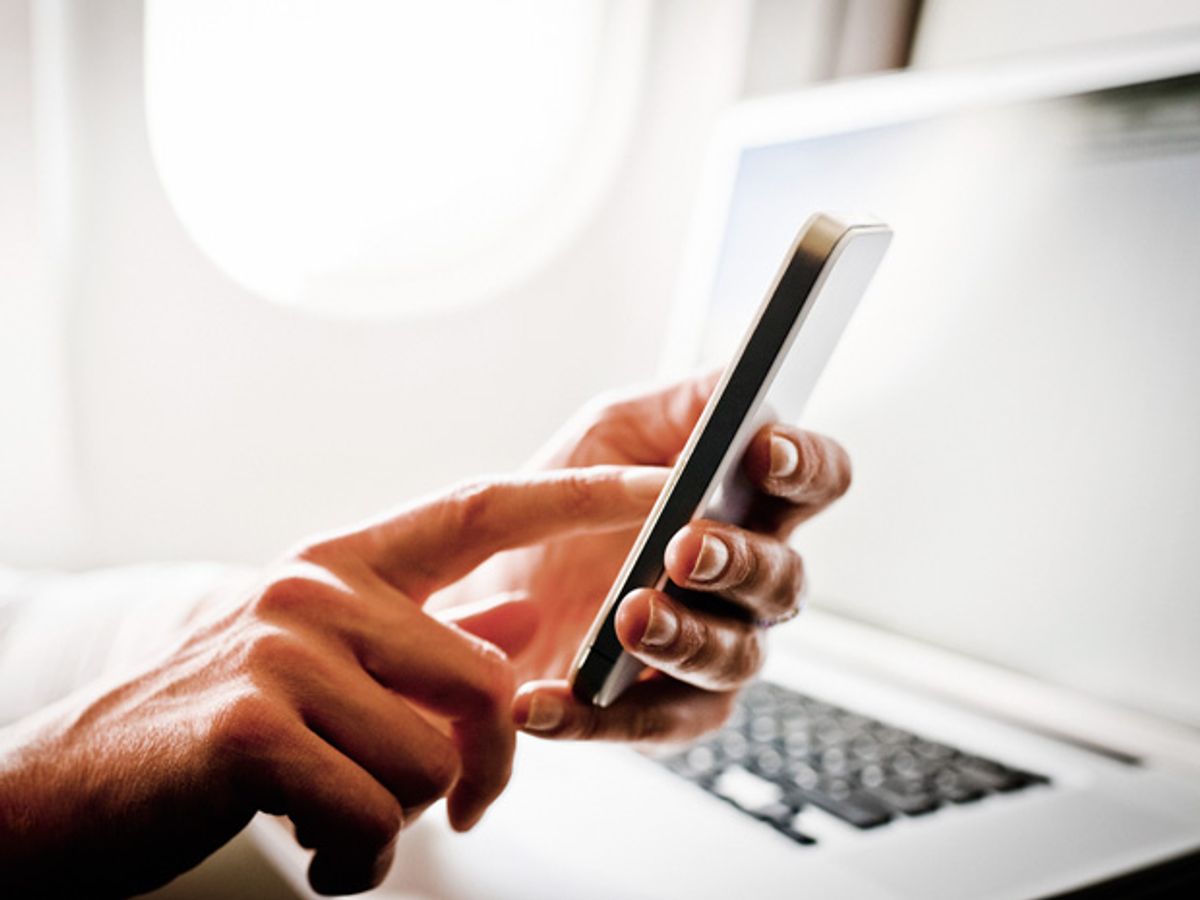UPDATE: The FAA will allow airlines to expand usage of personal electronic devices to all phases of flights, according to an agency announcement on Oct. 31. That means passengers will be able to read e-books, play games and watch videos on devices at all times, depending on individual airline policies. But cell phones must still remain in airplane mode with cellular service disabled.
An airline passenger may no longer have to switch off his or her e-book version of Fifty Shades of Grey or stop watching the latest "Game of Thrones" episode during takeoffs and landings. The U.S. Federal Aviation Administration (FAA) plans to recommend that airlines allow certain electronic devices intended for reading e-books, listening to podcasts, or watching videos to operate at all times.
The FAA's advisory panel is expected to maintain the current ban on making phone calls, sending and receiving e-mails and text messages, or using Wi-Fi, according to New York Times interviews with several members of the panel. But the panel is expected to finalize its new relaxed guidelines for other electronic device usage during a meeting this week—the last major step before making formal recommendations to the FAA by the end of the month.
The New York Times views the FAA's expected decision as a symbolic moment that goes beyond the practical benefits for airline passengers:
"The coming change represents a cultural milestone of sorts for the digital age, the moment when mass travel and mass communication finally meet."
That's perhaps a slight overstatement when you consider that the FAA does not plan to lift the ban on using mobile devices for communication aboard aircraft. But the policy may signal a solid first step toward long-desired changes in FAA regulations to accommodate the interests of passengers in the digital age.
The FAA plans to ask airlines to test their aircraft to ensure that the planes can tolerate interference from electronic devices in the aggregate—a requirement that spares airlines from tedious testing of each of the many different mobile devices used by passengers. The new policy would apply equally to all airlines and all aircraft.
Current regulations allow the use of portable electronics aboard aircraft only above 3000 meters (10 000 feet), and also permit phone calls once a plane has landed and is taxiing to its gate. But the New York Times pointed to a 2013 study by the Airline Passenger Experience Association and the Consumer Electronics Association which found that about 30 percent of passengers already forget to turn off devices during takeoff and landing.
The FAA, safety and passenger advocacy groups, and the airline industry have wrestled for decades with the question of whether such devices interfere with aircraft systems. (Carnegie Mellon researchers also investigated the issue for IEEE Spectrum in 2006.) Perhaps unsurprisingly, FAA policies have erred on the side of caution up until now:
"The technology for portable electronic devices (PEDs) has been around for many years and is still used in today’s electronics, but there are many uncertainties about the radio signals the devices give off. Even PEDs that do not intentionally transmit signals can emit unintentional radio energy. This energy may affect aircraft safety because the signals can occur at the same frequencies used by the plane’s highly sensitive communications, navigation, flight control and electronic equipment."
Airline crews have also reported many suspected incidents involving such electronic interference, but industry experts and airlines have never found definitive proof of such problems. Delta AIrlines went so far as to recommend allowing the use of electronic devices during both takeoff and landing, after investigating scattered complaints by its pilots and mechanics.
The FAA has already permitted airline pilots to use tablets in aircraft cockpits after rigorous testing. American Airlines recently became the first major airline to distribute tablets intended to replace its pilots' 35-pound flight bag of reference materials and manuals.
In the end, relaxed regulations for passengers could make the journey more comfortable for everyone—even if flight attendants still face the unenviable task of trying to ensure that nobody is using Wi-Fi, texting or making phone calls. NASA's Aviation Safety Reporting System, a database that allows aircraft crews to report problems without fear of punishment, has just as many reports of argumentative passengers using electronics at unapproved times as it does reports of suspected electronic interference with aircraft systems.
Photo: Anna Bryukhanova/Getty Images
Jeremy Hsu has been working as a science and technology journalist in New York City since 2008. He has written on subjects as diverse as supercomputing and wearable electronics for IEEE Spectrum. When he’s not trying to wrap his head around the latest quantum computing news for Spectrum, he also contributes to a variety of publications such as Scientific American, Discover, Popular Science, and others. He is a graduate of New York University’s Science, Health & Environmental Reporting Program.



